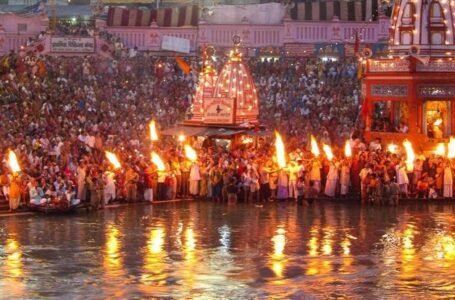Kaal Bhairav Temple: The Guardian Deity of Varanasi
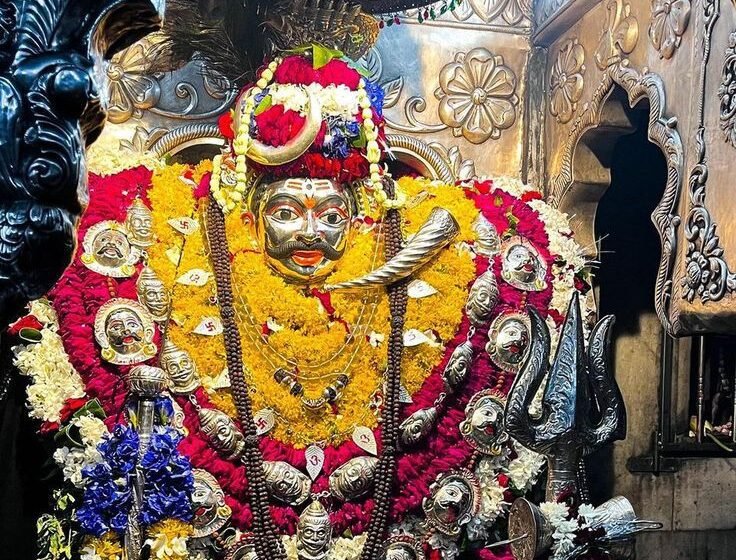
In the religious heart of Varanasi, the city is considered the eternal sanctuary of Lord Shiva. There stands one of the most strange and powerful deities of Shiva, the Kaal Bhairav Temple. Kaal Bhairav is conventionally considered the Kotwal or guardian deity of Varanasi. This deity is protector and, at times, disciplinarian, embodying both time and death. This temple is one of the most sacred and cannot be missed by anyone perishing in the floods of devotion in Visheshwarganj, where blessings of protection, courage, and freedom are begged for.

Kaal Bhairav combines Kaal, which implies time or death, and Bhairav, which stands for a terrifying aspect of Shiva. One is forcibly reminded of the force which governs creation-preservation-destruction. The fierce and awe-inspiring deity has a garland of skulls and carries a trident. The devotees normally regard Kaal Bhairav as a kind-hearted protector, even when seeking blessings for a good sect of his family, made out of fear.
Not merely an abode for worship, the Kaal Bhairav Temple is a landmark of culture and spirit in Varanasi. It offers a tangible expression of Lord Shiva’s deep connection with the city, a manifestation of humans’ continuous consternation over the transient nature of human life.
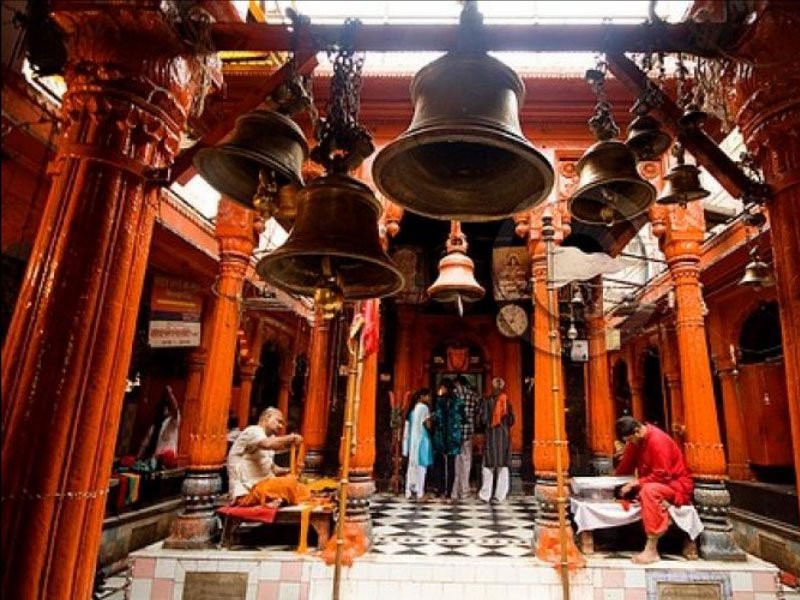
History of the Kaal Bhairav Temple
Kaal Bhairav Temple, surrounded by so many tales of myth and time, is one of the oldest temples in Varanasi. Written and oral history states that the temple was built thousands of years ago, around the time when Varanasi had begun to be built as a noble centre of spiritual learning and devotion.
The story of Kaal Bhairav is grounded in true mythology concerning his birth according to divine designs by Lord Shiva. According to the Puranas, Kaal Bhairav was born from the wrath of Lord Shiva when the creator god Brahma grew arrogant. Having made five heads, with an ego, Brahma tried to declare that he was the most powerful. In turn, Shiva, in the guise of the terrible form of Bhairav, cut off one of the heads of Brahma to teach him humility. The severed head, however, stuck to Bhairav’s palm, so he had to do penance known as Brahmahatya Dosha (the sin of killing Brahma).
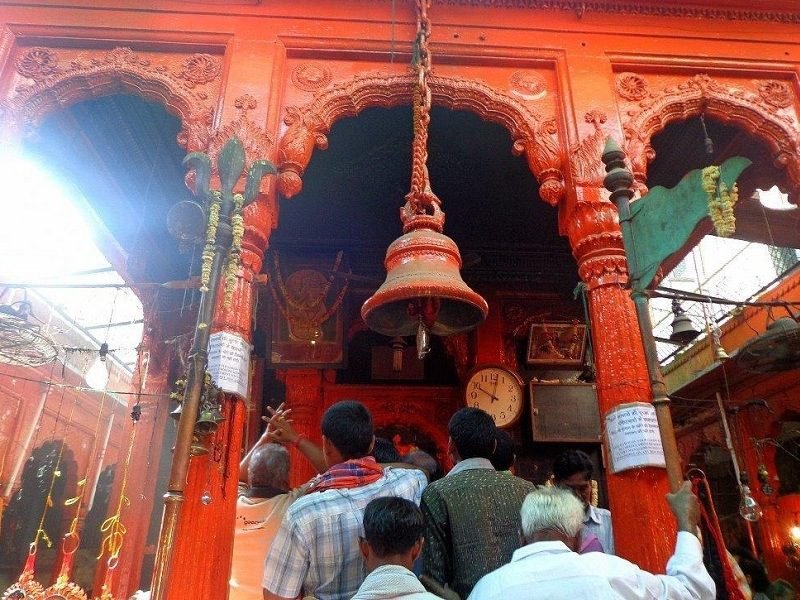
Kaal Bhairav trekked through many holy places in penance to wash off the curse before finally finding peace in Kashi (Varanasi). According to legend, Shiva declared Kaal Bhairav the eternal guardian deity of the city, giving him the power to watch over the activities of Kashi and all its inhabitants.
Throughout history, the temple has seen different phases of construction and repair. Although the original structure is said to date back to ancient times, most of the existing temple was built in medieval times under the patronage of local rulers and devotees. The architectural style of the temple is characterized by a modest but majestic design reflecting the spiritual ethos of Varanasi.
Mythological Significance of Kaal Bhairav
Kaal Bhairav is not only famous for Brahma’s curse in Hindu tradition but also a manifestation of Shiva’s protective creative energy that destroys negativity and allows one to progress spiritually. Kaal Bhairav is not only venerated as time himself, which serves to remind his devotees of the fleeting aspect of life and encourage them to be righteous.

Traditionally he is depicted as thunderous, part of the tantric tradition in which he guards a practitioner throughout ceremonial rituals. In staying true to this description, Kaal Bhairav stands in the position of guardian, assisting the seeker in traversing the spiritual journey by ending the barriers that arise in his/her path and putting one safe from all the external and internal obstacles.
In sacred geography, it is Kaal Bhairav who is authorized to allow the entrance and remain in the city of Varanasi. His temple is one of the first stops for the devotees upon their arrival in the city, as they come to ask his blessings for an undiluted, happy, and smooth traverse into the place on their spiritual journey. No one believes that he can leave Varanasi without Kaal Bhairav’s permission, thus illustrating his importance as a guardian of the city.
Rituals and Worship at the Kaal Bhairav Temple
The rituals in the Kaal Bhairav Temple signify the deity’s distinct characteristics and ties to the great tantric tradition. Tantrics usually offer mustard oil, black sesame seeds, flowers, and vermilion to the deity because they are considered auspicious. While normal worship with a daily aarti and other rituals is performed daily by the temple’s priests, a senior priest performs the special rituals during the festivals dedicated to Lord Shiva and Kaal Bhairav.
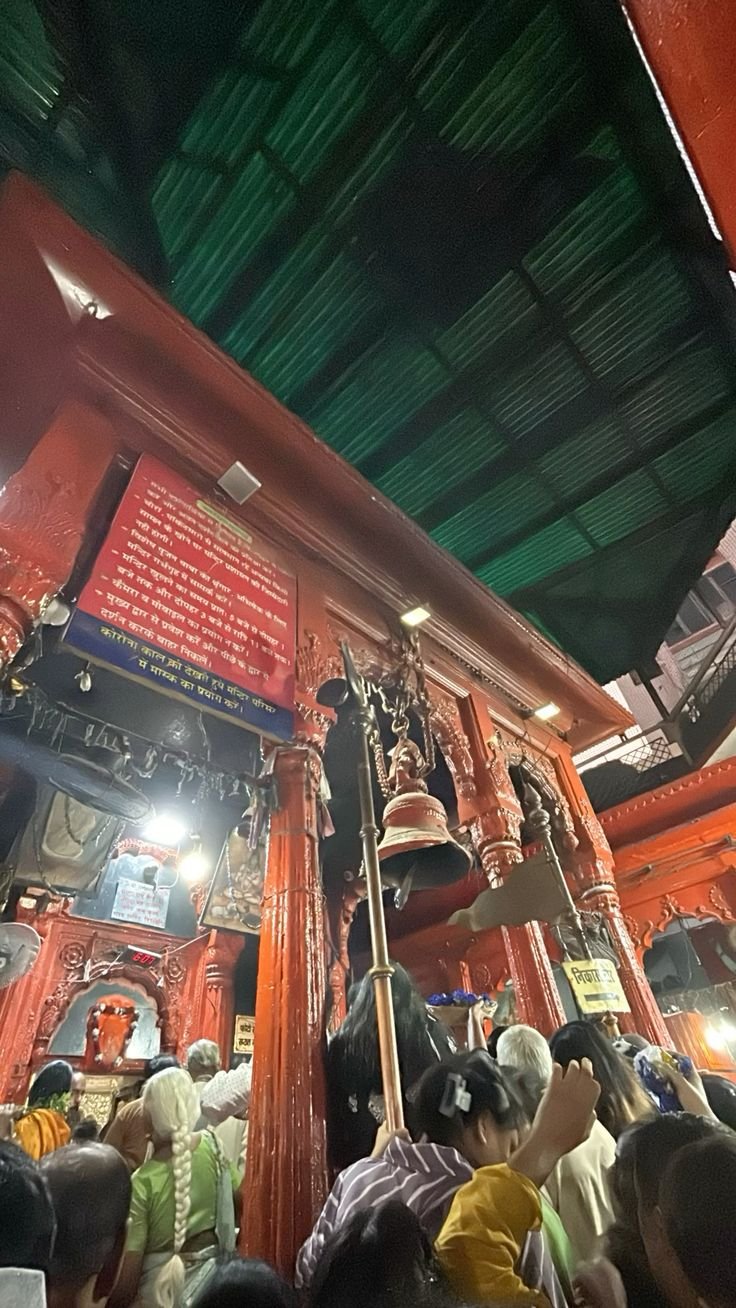
The temple most significantly enjoys the worship of the idol, which is tastefully adorned and smeared with vermilion. The idol is depicted in a ferocious yet Kindly form, and devotees chant prayers while touching their feet or bowing down towards the idol to gain blessings.
The temple sees a great rush on Sundays and in the month of Shravan (July-August), an auspicious month dedicated to Shiva. Devotees pray to Kaal Bhairav in those shrines to wipe out their fear, overcome obstacles, and attain spiritual enlightenment.
Offering of coins of Bhairav, small coins marked with the deity’s image is one of the unique traditions in this temple. These coins serve as talismans or lucky charms, which devotees carry with them as a symbol of Kaal Bhairav’s blessings.
Cultural and Religious Importance
The Kaal Bhairav Temple is a cultural institution where one finds the essence of the spirit of Varanasi. It has to do with being identified as a spiritual hub with the Kaal Bhairav as the presiding deity over the city. The Kaal Bhairav temple reminds us of the fact that Lord Shiva has an affinity to the place, and through this temple, the gods meet the earth.
For the people of Varanasi, Kaal Bhairav is not only a god but a protector and guide in their daily lives. Many believe that his blessings ensure safety, prosperity, and spiritual growth, making him an integral part of the city’s collective consciousness.
The temple is also used in the religious festivals and ceremonies of the city. Shivaratri is one such occasion, which makes the temple a site of devotion and celebration, with devotees performing elaborate rituals and seeking the deity’s blessings. The festival once again places importance on Kaal Bhairav’s being part of the divine family of Shiva and reinforces his bond to the spiritual heritage of the city.

Architecture and Features of the Temple
The Kaal Bhairav Temple, though relatively small in size, has an air of mysticism and reverence. The main sanctum of the temple contains the idol of Kaal Bhairav, surrounded by an atmosphere of devotion and solemnity. Images and symbols related to Shiva and the tantric tradition are found on the walls of the temple, indicating the esoteric nature of the deity.
There are smaller shrines for other deities within the temple courtyard itself, creating a sacred space for devotees to perform different kinds of worship. The simplicity and the unpretentiousness of the temple show that this temple has given importance to spiritual depth rather than material grandeur.
Its location in Visheshwarganj, the most populated part of Varanasi, gives this temple its charm. While surrounded by the hustle-bustle of the urban atmosphere, the temple retains an atmosphere of serenity that acts as a retreat from the daily chaos.

Challenges and Preservation
Similar to many of the old religious institutions in India, Kaal Bhairav Temple also faces the problems of conservation and modernization. Rising tourist and pilgrim footfalls are exerting a lot of pressure on the infrastructure of the temple. Environmental issues such as pollution and urbanization have harmed its surroundings.
Efforts to preserve the heritage of the temple have been taken by local authorities and religious organizations. These efforts include architectural restoration, improvement of visitor facilities, and awareness campaigns on the historical and spiritual significance of the temple.
Conclusion
The Kaal Bhairav Temple is an icon of Varanasi’s spiritual significance, symbolizing the city’s intimate connections with Lord Shiva and the way it acts as a guiding light. Its mythology, rituals, and social standing all give a hint to some of the eternal wisdom of Hindu philosophy and some of the abiding commitment.
The Kaal Bhairav is more than a deity to someone who visits the temple; he is a teacher, a protector, and an inquiry into the transient nature of life. Nestling in the heart of Varanasi, where the eternal cycle of life and death is celebrated, it is a sacred space for all seekers to confront their fears, embrace transformations, and find solace in the divine.


